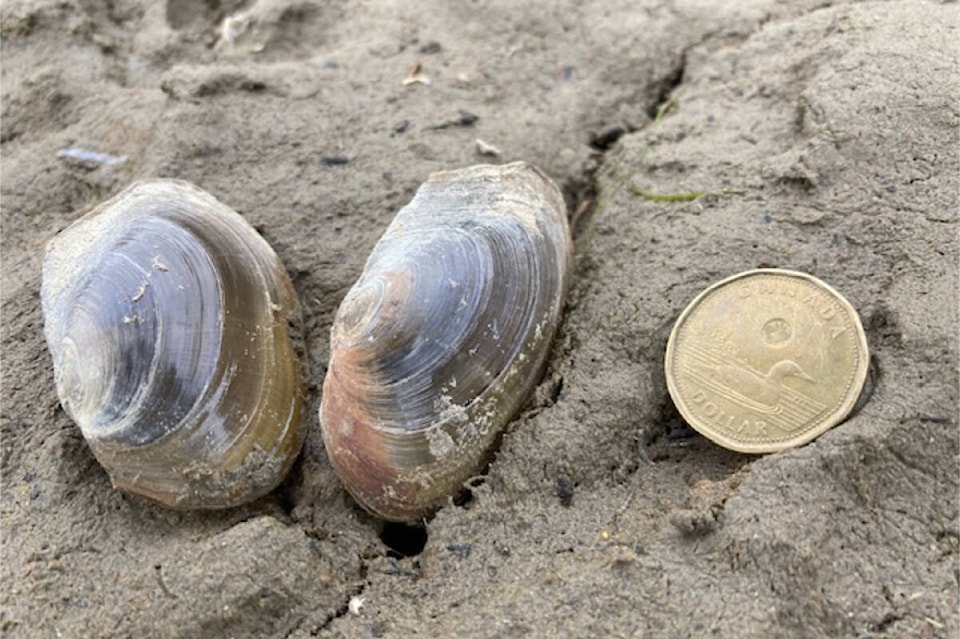Submitted by Bill Chapman, PhD, retired research scientist
Each time the Arrow Lakes water level reaches peak low levels the incipient littoral zone biotic community is reset to zero (essentially all aquatic life in the lake bottom dies). This is most obvious in the populations of mussels that try to inhabit the zone of water fluctuation.
Freshwater mussels are fragile species that are at risk over most of their range. They are sensitive to pollution, eutrophication, water temperature and fluctuating water levels which means that much of their habitat is threatened. We have been monitoring the mussel population in the Arrow Lakes for two decades now. As the water levels drop we start to see shoals of immature mussels which die upon exposure. The lower the water level, the larger the mussels we see because the water is less frequently drawn down to that level.
Right now on the Arrow Lakes we are seeing nearly fully mature mussels exposed which means the water is at a low level that the lake hasn’t had for years. The mussels die and while a number of them are eaten by birds, raccoons and others, hundreds of thousands of them just rot in place where they later enter Castlegar’s drinking water supply when the lake level comes up again.
The constant resetting of the biologically active littoral zone to zero is what prevents the Arrow Lakes from regaining their former productivity for fish, including sturgeon and other wildlife. It will be many years before there is another opportunity to see such large beautiful mussels in the Arrow Lakes.
READ MORE: Castlegar to host live and virtual fly fishing film festival
The main species of mussel that we see is the winged floater (Anodonta nuttalliana). This intriguing species was first identified in a tributary to the Columbia River, not far from the Canada/US border, so it is an ancient resident of the area. Like most freshwater mussels it has an intriguing life history where it hitches rides on fish in its larval stage, which keeps the young from being washed away downstream. The mussels are important food sources for a variety of species including sturgeon and formerly people. They help to filter the water of floating organisms and being sensitive to pollution and other stressors, are a good indicator of water quality.
Frequent visitors to the Arrow Lakes will have noted that in recent years the lake level is being kept very low for extended periods of time. While the amount of water that the U.S. is able to draw from the lake is governed by the Columbia River Treaty, the mechanics of how the water is managed is kept arcane, ostensibly for economic reasons. We do know that several western American states have started keeping water flows higher in their rivers to benefit the inhabitants of those rivers. We can only hope that they are not doing so at the expense of species north of the border (including people).
Submitted by Bill Chapman, PhD, retired research scientist and Louisa Chapman, BSc. Castlegar, BC
READ MORE: Castlegar RCMP searching for suspect in attempted robbery at bottle depot
newsroom@castlegarnews.com
Like us on Facebook and follow us on Twitter
